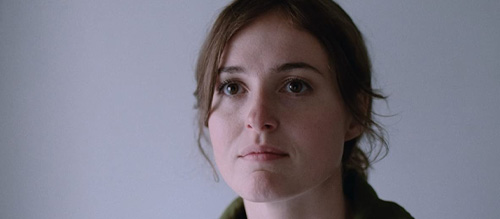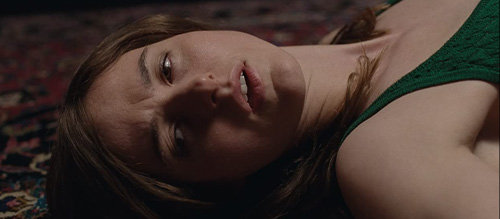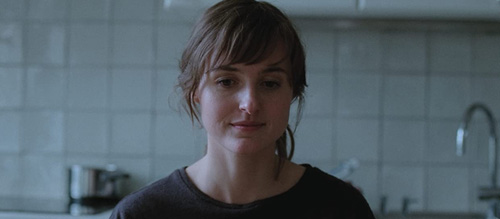How ‘The Worst Person in the World’ Redefines Romantic Cinema
Since its opening at Cannes International Film Festival in 2021, Joachim Trier’s The Worst Person in the World has been welcomed by audiences like the first sunny day of Spring. This romantic drama has been celebrated for its authentic depiction of the millennial experience, the way it captures Oslo, and for an outstanding performances from its cast, led by the BAFTA-nominated Renate Reinsve.

Its UK distributors MUBI have advertised the film as deeply romantic, even organising Valentine’s Screenings in London. Reviews quoted on the film’s poster refer to it as “a tender relationship comedy with a wonderful freshness” and “one of the best romantic films of recent times.” These statements have been widely echoed by critics and film fans alike, but it’s fair to say that whilst certainly deeply affecting and sensual and romantic, The Worst Person in the World also challenges what we have come to expect from romance films.
The Worst Person in the World follows its protagonist Julie as she stumbles through her late twenties trying to find herself: she is a medical student; a psychology student; a photographer; a bookshop sales assistant. She falls in and out of love before diving headfirst into a relationship with Aksel, a man 15 years her senior, and a renowned author of a “vaguely sexist” comic. Unlike in traditional romance fare, her relationship with Aksel is not the focal point of the film, as Julie also finds herself falling for Eivind, a barista she meets when she crashes a wedding. Over the course of the film’s two hours, we see Julie navigate these two relationships whilst also trying to understand her place in the world, as in any coming-of age movie. Ultimately, we arrive at the end of the film to find Julie on her own, and completely okay with that.
Within the runtime of this Trier picture, both of the two central romantic relationships are wonderful to watch play out. They each contain passion, frustration, tenderness, and outright joy. And yet, they are completely different from each other – Julie and Aksel’s story and Julie and Eivind’s story could be completely separate romantic dramas, but Trier and Eskil Vogt’s Oscar-nominated screenplay instead uses each of these relationships to tell us more about Julie and her process of growing up; this is her story above all else.
This is one element in which the film defies what we expect of a traditional rom-com. While focusing on one central protagonist isn’t unusual within the romance genre, for her to have two central, defining romances, neither played as more important than the other, and without a love triangle dynamic, makes this film something more mature and grounded than other works. There is a crossover in the timeline when it comes to her relationships with these two men, but there is never any outright competition: this isn’t some Pretty in Pink-esque 80s rom-com, or even anything like 40s screwball romantic comedies The Philadelphia Story or His Girl Friday.
Aksel and Eivind exist separately, both to us and to Julie, and this is a reminder of how multiple relationships can exist completely and with equal significance in a person’s life. Romantic cinema as a genre has often had a preoccupation with The One, but Julie’s love stories in The Worst Person in the World are often chance encounters that end not out of any big dramatic fall-out, but realisations that being everything one person needs is just too big of a burden to bear.

The film also challenges ideas of intimacy, prompting you to rethink what the term itself means to you and to other people. The most pressing example of this comes in the chapter of the film in which Eivind and Julie first meet. Both characters are already in relationships and yet find themselves inextricably attracted to each other. To deal with this, they make a deal to flirt without cheating, and spend the night getting closer and closer while managing to never (technically) cross that line of having cheated on their partners. As we watch them breathe in each other’s cigarette smoke, or sit in a bathroom together while one of them goes to the toilet, it’s harder to believe either of them when the sunrise arrives and they still insist that they didn’t cheat; not at all. Somehow, a scene that involves zero sexual activity manages to be the most steamy and compelling scene of the film.
The other way it challenges ideas of intimacy is much more tender, and it comes in the way that Aksel and Julie’s relationship is handled in the latter portion of the film. While the couple are no longer romantically entangled, their deep connection remains prescient and there’s a sense that actually they now see each other better than when they were together. While you know that there remains a love between them, it is never clear whether Julie still views this as a romantic love or rather a kinship between two people who once meant the world to each other. It is rare to see a romance film that shows such a strong bond between people you know aren’t going to end up together, yet doesn’t make you regret that they don’t.

In the Oscar-winning 1970s romantic drama Love Story, there is a famous line that says “Love means never having to say you’re sorry.” While the quote is considerably wrong, in Julie you have a protagonist who feels like she is constantly on the verge of wanting to apologise. She considers herself, as the title suggests, ‘The Worst Person in the World’ after all. This is another way in which the film redefines the romantic genre: it positions a flawed romantic lead as still deeply human and worthy of our empathy, even when she makes decisions that hurt others.
There has been a shift in the writing of female characters in the past few years, largely helped by shows like ‘Fleabag’, in which messy women are granted compassion and authenticity. Yet it still feels refreshing to see a character like Julie shown in the light she is. Only a short time ago, a woman who makes the choices she does, especially in regards to her flakiness, would be painted in a villainous light by a film that celebrates love, romance and happy endings. However, Julie’s life feels very real, and so easily could be any of ours. For that reason it is difficult to reject her. This is, of course, massively supported by Renate Reinsve’s incredible performance – breathing life and tenderness and ferocity and vulnerability into Julie, each making her so much more than any one thing. We never think of her as the worst person in the world, because to do so would be to incriminate ourselves; every thought and feeling Julie feels is so ordinary, so human, even if they aren’t thoughts and feelings we expect to see in a rom-com.
At the end of the film we see Julie moving on, on her own, and this too is not what we expect from a film heralded as an uplifting romance. Where is the traditional matchmaking happy ending? But, Trier’s film acknowledges that this is a happy ending for Julie, especially given that she seems to have finally found her path in a world that offered so many options. Ultimately, it feels that by the end of the film her romances with others have helped her to better understand her relationship with herself, which in many ways is the central love story of the film.
The Worst Person in the World is undoubtedly one of the best romantic dramas of recent years. There are multiple scenes that stick on the brain and swell feelings of yearning and romanticism, yet it is its refreshing grasp on the varied ways intimacy can look, as well as its broken and messy protagonist, that make it the hit that it is.
Written by Rehana Nurmahi
You can support the author of this article, Rehana Nurmahi, at the following links:
Twitter – @Han_notsolo
Letterboxd – hana_banana97
Portfolio – Authory

